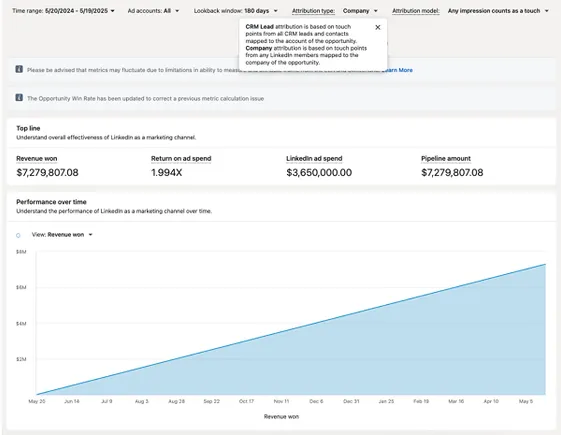Data: the linchpin of lucrative SaaS exits
For SaaS businesses eyeing a successful exit, particularly when engaging with sophisticated Private Equity (PE) and tech investors, the era of simply showcasing impressive top-line growth is over.

For SaaS businesses eyeing a successful exit, particularly when engaging with sophisticated Private Equity (PE) and tech investors, the era of simply showcasing impressive top-line growth is over.
Today, data reigns supreme. It's the bedrock upon which compelling value stories are built, the lens through which operational efficiency and scalability are scrutinized, and ultimately, the key to unlocking those coveted higher valuation multiples.
A robust data strategy, coupled with the ability to extract meaningful insights, is no longer a ‘nice-to-have’ but a fundamental requirement for securing a lucrative exit in today’s competitive landscape.
What investors are looking for
So, what exactly are these discerning investors looking for in the data of a prospective SaaS acquisition? The foundation, without a doubt, remains the ARR bridge, or what can be referred to as the ‘revenue snowball’. This isn't just about presenting a static ARR figure; it’s about demonstrating how that recurring revenue has evolved over time. Investors will dissect this data from every angle – group-wide, segmented by product, customer cohort, and geography.
They want to see the trajectory, understand the drivers of growth and churn, and identify any potential vulnerabilities. Therefore, your ARR bridge needs to be more than just a spreadsheet; it needs to be a dynamic, drillable, and rigorously stress-tested tool that can withstand the intense scrutiny of due diligence.
Beyond the ARR bridge, several other key insights are paramount. Sales pipeline reporting provides a crucial forward-looking perspective. Investors want to see a healthy, well-managed pipeline with clearly defined stages, realistic conversion rates, and accurate forecasting. This demonstrates the predictability and sustainability of future revenue growth. Similarly, classic FP&A reports remain essential, offering a historical view of financial performance, profitability trends, and cost management.
However, some SaaS firms are now also looking to leverage product usage insights to a greater extent than ever before. Understanding how customers are interacting with the platform, identifying power users, and tracking feature adoption provides invaluable insights into customer stickiness, potential for upselling, and overall product value.
Looking ahead
Looking ahead, the role of data in shaping SaaS valuations will only intensify. We anticipate that the level of scrutiny and the expectation for data maturity and insightful analysis will continue to rise. Gone are the days of presenting high-level metric summaries; investors will increasingly demand granular insights and a clear understanding of the ‘why’ behind the numbers. When it comes to performance and trends; just saying profitability has grown by X% year on year is now not enough - it needs to be evidenced by granular data and solid analytics.
Investors want to know what’s working now and how your company can scale post-acquisition. By providing the context behind the metrics, it makes it easier to showcase opportunities for further growth, with potential investors being able to leverage these data “assets” to underpin their investment cases. With higher investor expectations, those who fail to do so risk undermining their valuation potential or, worse still, failing to secure the deal.
Furthermore, I believe that companies will need to start demonstrating how they are leveraging data to capitalize on the value that advanced analytics can bring. This could range from using AI-powered analytics to identify at-risk customers to employing machine learning to drive new business growth and customer expansion.
Even while there may be applications of AI tools in the SaaS space that aren’t necessarily tied to a firm’s data, most of these revenue-driving applications of advanced analytics and machine learning are only possible when the fundamentals are already firmly in place.
Building compelling value
So, how can SaaS firms proactively use data to build a compelling value story that resonates with potential acquirers? It boils down to not just making data a strategic priority but building the data policies, expertise and infrastructure you need into the fabric of your SaaS business.
Everything does not have to be in place from day one, rather you need to create a strategy that will enable you to ramp up to gathering all the critical data points you will need to answer every question an investor will ultimately ask. Doing this also lays the foundations to take advantage of the latest generative AI advances. As mentioned, AI applied to a shaky data foundation is unlikely to get you results, but applied to the right data foundations can transform the value of your business.
Luckily, the data points that PE firms and other potential investors now really value are the same insights that will make a fundamental improvement to how effectively you make decisions as your SaaS startup scales. The important thing to remember with any data project is to start with the questions you want to answer. This means understanding modern investors. Ask yourself, what metrics, beyond simple revenue figures, will tell the story of your company’s success and potential?
Aside from the core metrics already mentioned, it could be there are further opportunities to demonstrate differentiation. It could be the diversity of your customer base - both geographically and by sector. It could be that the cost of serving an additional customer and the automation of key processes can provide compelling evidence of scalability.
When you have a clear picture of where your real strength and USP exists, the next step is to develop the data collection, management and analysis systems and policies that will prove what you know to investors.
Further down the line
Further down the line it’s likely that there will also be a strong business case for investment in upskilling and retraining staff across the board
This should include everyone, including all senior teams. Even today, it still surprises me how few founders and business owners can understand and interpret their core business data, instead relying on a handful of experts. After all, it’s impossible to know what you don’t know – and a second-hand account of somebody else’s understanding, no matter how advanced it may be, could never substitute for your own personal analysis.
By building up your own expertise now, you and your senior team will be best positioned to demonstrate a compelling equity narrative that results in the highest possible valuation at the point of exit.
We've compiled a list of the best business intelligence platforms.
This article was produced as part of TechRadarPro's Expert Insights channel where we feature the best and brightest minds in the technology industry today. The views expressed here are those of the author and are not necessarily those of TechRadarPro or Future plc. If you are interested in contributing find out more here: https://www.techradar.com/news/submit-your-story-to-techradar-pro













.png)





















































































































































































